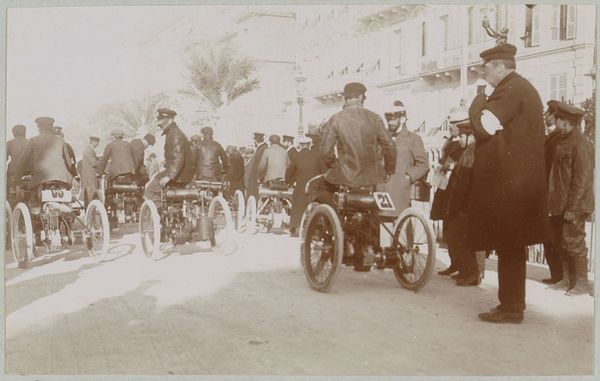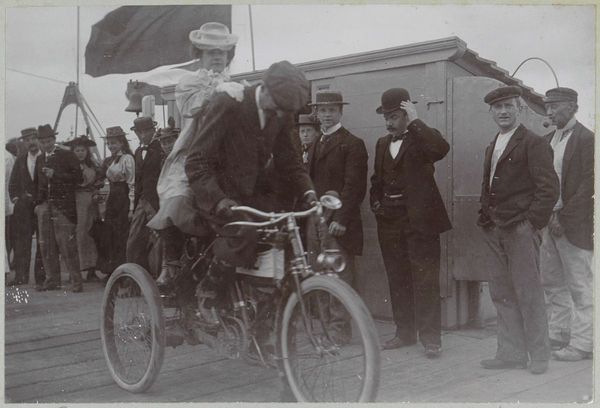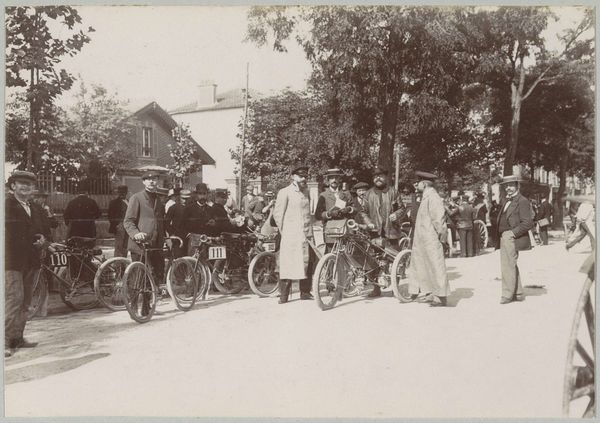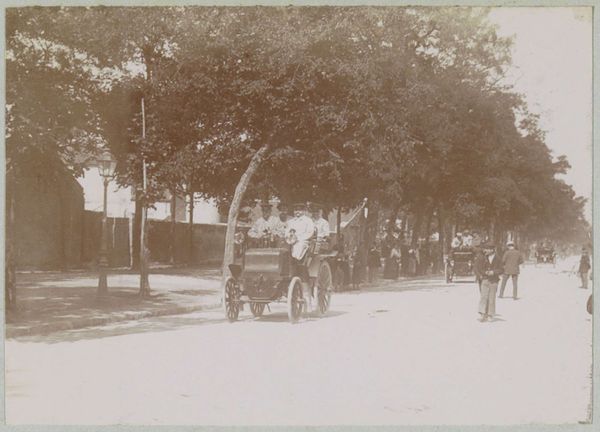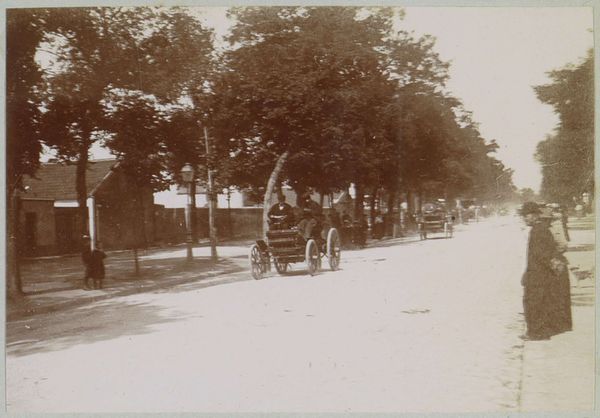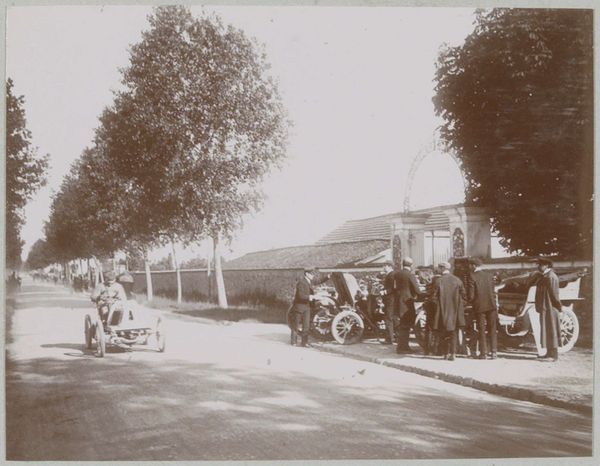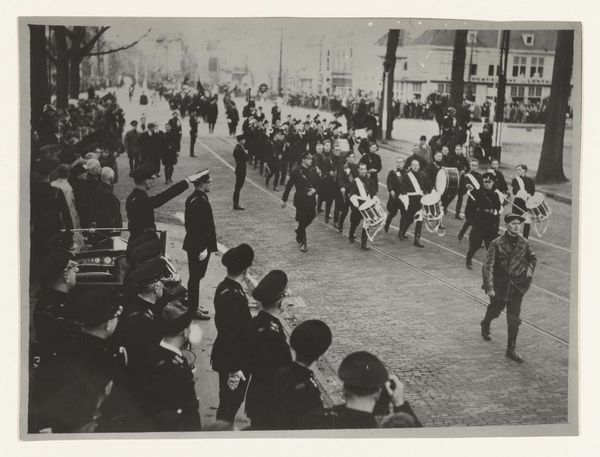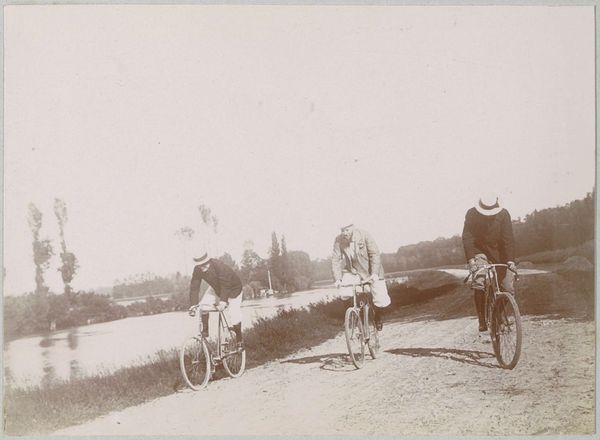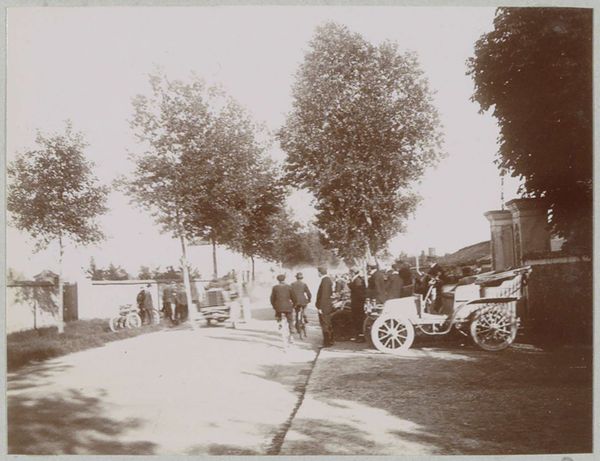
Gemotoriseerde driewielers bij de start van de race Nice-Magagnosc Possibly 1899
0:00
0:00
Dimensions: height 68 mm, width 108 mm
Copyright: Rijks Museum: Open Domain
Editor: We're looking at a photograph called "Gemotoriseerde driewielers bij de start van de race Nice-Magagnosc," possibly from 1899, located at the Rijksmuseum, by Delizy. It depicts what appears to be the start of a motor tricycle race. The composition and grainy quality of the image evoke a real sense of speed and motion. What stands out to you? Curator: This photograph is fascinating. What I find interesting is how it highlights the social and technological shifts of the era through its very construction. Consider the materials – photographic emulsion on paper. This readily reproducible image democratizes the spectacle of the race, making it accessible beyond those physically present. Who produced the photographic paper? What were the labor conditions of the people making the tyres? How was this moment in transit captured? This photograph represents so much more than just a race. Editor: I never thought about the materials of a photograph in that way before. The photo being reproducible, does this help in mass media exposure? Curator: Precisely! Photography as a medium facilitated a new kind of spectatorship and participation in events. Suddenly, racing could be consumed in a new fashion. Consider the tricycles themselves: were they factory produced and available to the affluent? The start line becomes a nexus point. This one single race helps promote new technologies. What are some possible socio-political outcomes? Editor: It’s amazing to consider this photograph as a product of its time, reflecting emerging industries and changing social practices. The whole thing starts to come alive in a new, informative way. Curator: Indeed. By looking at the image through a materialist lens, we can examine not just what is represented, but the social relations and forces embedded within its creation and circulation. This approach transforms the image from a static representation into a dynamic document of history.
Comments
No comments
Be the first to comment and join the conversation on the ultimate creative platform.
